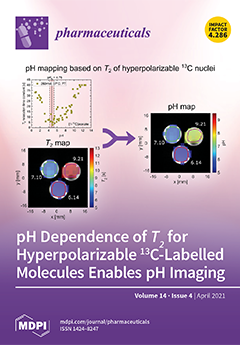Isolated α,β-dehydromonacolin S (
C5) from soil-derived fungus
Aspergillus sclerotiorum PSU-RSPG178 was recently shown to exhibit an inhibitory effect against 3-hydroxy-3-methylglutaryl coenzyme A reductase (HMGR) activity in vitro. In this study, we investigated the effects of
C5 on lipid-lowering, hepatic steatosis, and
[...] Read more.
Isolated α,β-dehydromonacolin S (
C5) from soil-derived fungus
Aspergillus sclerotiorum PSU-RSPG178 was recently shown to exhibit an inhibitory effect against 3-hydroxy-3-methylglutaryl coenzyme A reductase (HMGR) activity in vitro. In this study, we investigated the effects of
C5 on lipid-lowering, hepatic steatosis, and hepatic gluconeogenesis in vivo. The control rats received a daily dose of either vehicle or
C5 at 10 mg/kg, while the high-fat diet-induced obese (HFD) rats were administered vehicle; 1, 3, or 10 mg/kg
C5; or 10 mg/kg lovastatin (LO) for 6 weeks.
C5 significantly improved dyslipidemia and diminished liver enzymes, HMGR activity, insulin resistance, and hepatic steatosis, comparable to LO without any hepatotoxicity and nephrotoxicity in HFD rats. A higher efficacy of
C5 in lipid-lowering activity and anti-hepatic steatosis was associated with a significant decrease in genes involved in lipid metabolism including sterol regulatory element binding protein (SREBP) 1c, SREBP2, liver X receptor alpha (LXRα), and peroxisome proliferator-activated receptor (PPAR) gamma (PPARγ) together with an increase in the PPAR alpha (PPARα). Correspondingly,
C5 was able to down-regulate the lipid transporters cluster of differentiation 36 (CD36) and Niemann-Pick C1 Like 1 (NPC1L1), increase the antioxidant superoxide dismutase gene expression, and decrease the proinflammatory cytokines, tumor necrosis factor alpha (TNFα) and interleukin 1 beta (IL-1β). Impairment of hepatic gluconeogenesis and insulin resistance in HFD rats was restored by
C5 through down-regulation of the gluconeogenic genes phosphoenolpyruvate carboxykinase (PEPCK) and glucose-6-phosphatase (G6Pase), and the activation of AMP-dependent kinase serine (AMPK) and serine/threonine protein kinase B (Akt). Collectively, this novel
C5 may be a therapeutic option for treating dyslipidemia, hepatic steatosis, and reducing potential risk for diabetes mellitus.
Full article






